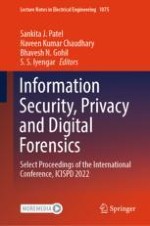This volume comprises the select proceedings of the International Conference on Information Security, Privacy, and Digital Forensics (ICISPD 2022). The content discusses novel contributions and latest developments in cyber-attacks and defenses, computer forensics and cybersecurity database forensics, cyber threat intelligence, data analytics for security, anonymity, penetration testing, incident response, Internet of Things security, malware and botnets, social media security, humanitarian forensics, software and media piracy, crime analysis, hardware security, among others. This volume will be a useful guide for researchers across industry and academia working in the field of security, privacy, and digital forensics from both technological and social perspectives.
